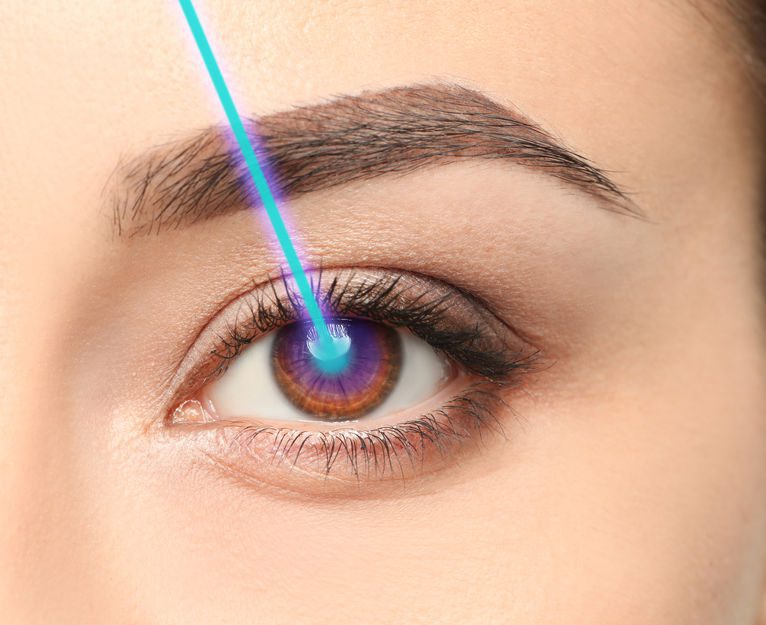Options in Laser Vision Correction
Conventional LASIK – This is the oldest form of LASIK which uses a microkeratome blade to create a flap in the cornea. The flap is folded back and an excimer laser is used to reshape the cornea under the flap to address your vision prescription. The flap is gently placed back over the treatment area. Conventional LASIK is typically the least expensive laser vision correction option.
Custom LASIK (including wavefront-guided, wavefront-optimized, topographic-guided) – These modern LASIK techniques capture highly detailed measurements to create a unique map of your eye. This data guides the excimer laser to provide a more accurate and precise vision correction treatment based upon your specific anatomy.
All laser or blade-free LASIK is an option that replaces the microkeratome blade with a femtosecond laser. Studies show patients have fewer flap complications, need fewer treatments, and have a greater likelihood of achieving 20/20 visual acuity or better when using all-laser LASIK.
PRK (photorefractive keratectomy), also known as Advanced Surface Ablation, is a laser vision correction treatment applied to the surface of the cornea. The same excimer laser and similar eye mapping technologies used in LASIK can be used to customize PRK treatments.
LASEK or epi-LASEK is similar to PRK in that the laser is applied to the surface of the cornea. With LASEK and epi-LASEK, the cells that cover the cornea – known as the epithelium layer – are preserved and reapplied after the laser vision correction treatment.
SMILE (Small Incision Lenticule Extraction) uses a femtosecond laser to create a small disc of tissue within the layers of the cornea, which is then removed through a small incision in the cornea to improve the focusing power of the eye.
Refractive Lens Exchange uses a femtosecond laser to access the crystalline lens of the eye, which is removed and replaced with a vision-correcting lens, known as an intraocular lens or IOL. These IOLs can treat a wide range of vision issues, including presbyopia. By replacing the natural lens with an IOL, patients avoid having cataract surgery later in life.
Leading LASIK surgeon, Neil B. Griffin, M.D., uses the latest and most advanced lasers. We are the only center who has an on-site LASIK Suite in the local region. Dr. Griffin has been named one of America’s Best Physicians by the National Consumer Advisory Board.
Griffin Eye Center is the first in South Carolina to offer the latest advancements of both the Wavelight® EX500 excimer laser and the VisuMax® laser. The laser speed and accuracy allow Dr. Griffin the ability to expand treatment capabilities, enhancements of current treatments, broaden range of correction and provide the best outcomes for our patients seeking LASIK surgery in Myrtle Beach, South Carolina area.
To learn more about LASIK: https://griffineyecenter.com/lasik-surgery-in-myrtle-beach/
